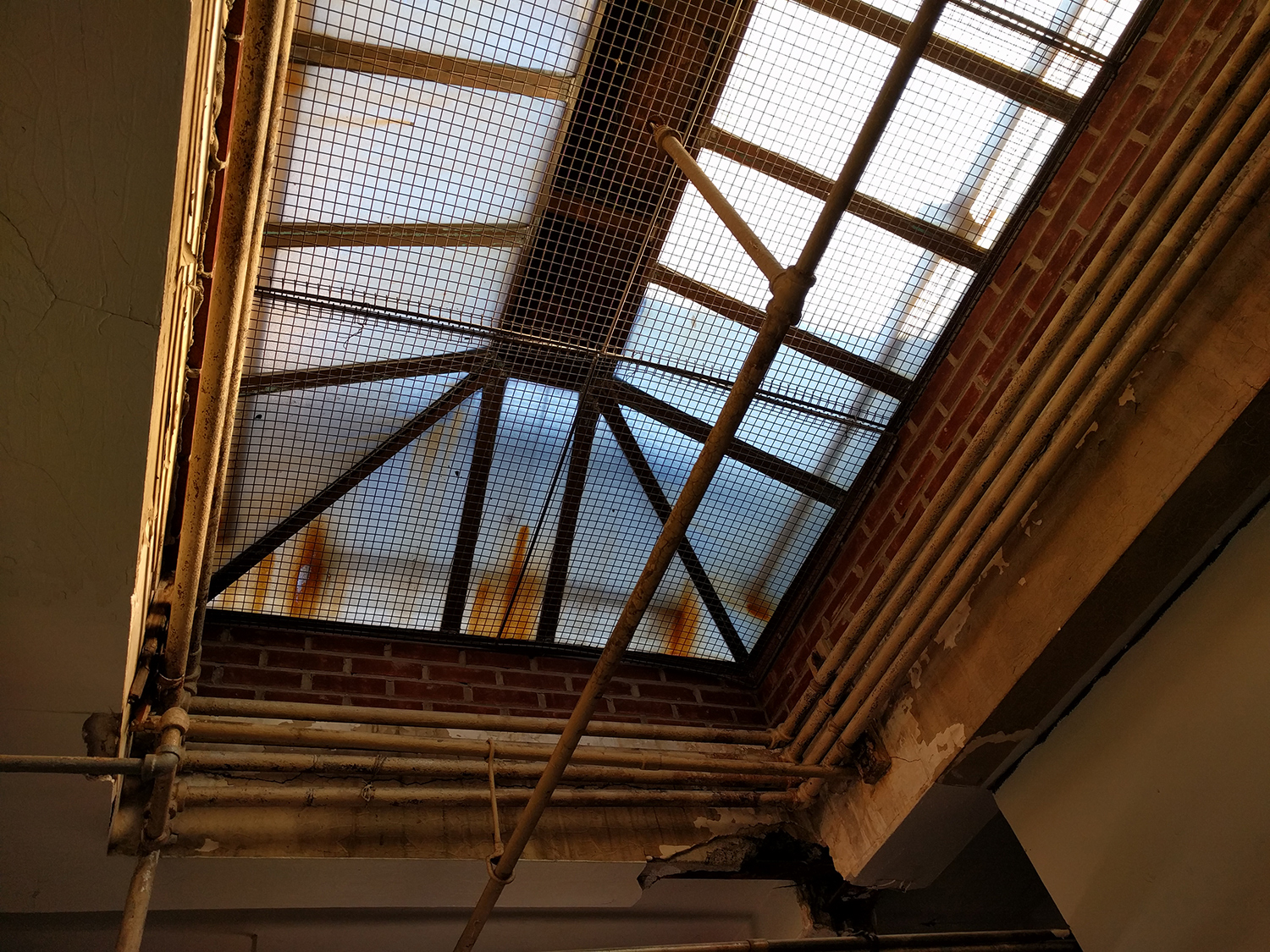“There’s a lot to love about the Nexus 5X, but poor battery life bars the affordable phone from our recommended list.”
- Fantastic fingerprint sensor
- More affordable $430 price
- Battery lasts less than a day
- Camera has focusing issues
- Plastic design
- Interface becomes laggy after several weeks use
It’s two years old, but the Nexus 5 is still one of our favorite Android phones. Priced at $350, it offered premium features at a budget price. We aren’t sure why it took Google so long, but its successor, the Nexus 5X, is finally here. And like all decent sequels, it’s better than the original in almost every way – except in the two ways that matter most: price and battery life.
Updated on 11-18-2015 by Jeffrey Van Camp: I updated this review after using the Nexus 5X as my daily phone for several more weeks. Our early reports of poor battery life were definitely substantiated by further use, and we’ve experienced some troubling interface lag lately.
Comfortably plastic
Plastic has fallen out of favor these days, as phones try hard to compete with the aluminum iPhone, but there’s nothing particularly wrong with it. The Nexus 5X isn’t the phone you’ll buy if you’re splurging or just won the lottery, and its construction is proudly plastic. With that come two big benefits: it’s lightweight and it might survive a fall without shattering.
Maybe is always the key word when dealing with a falling phone, however. The durable Gorilla Glass 3 5.2-inch screen is a step up from previous screen glass, and we like that the sides of the Nexus 5X rise slightly higher than the screen, forming a tiny lip of ½ a mm or so. It seems like nothing, but it takes a lot of pressure off the screen — so long as your phone doesn’t hit the ground glass-first when you drop it.
This is also a smaller phone than all of the monster phablets you see these days. With a 5.2-inch screen, it’s taller and wider than the
The phone’s rear camera sticks out a bit, but this is a common issue among many major phones in 2015, including the
Listening to music on the speaker is about as fun as it is on most every
Speakers aside, there are two features that really set the design of the Nexus 5X (and it’s big brother, the Nexus 6P) apart from the crowd: A USB Type-C charger and a fingerprint sensor on the back.
A fabulous fingerprint and payment sensor
Yes, this is a phone with a working fingerprint sensor, and boy does it work nicely. Like the
Kudos goes to Google and LG for an amazing fingerprint and payment system that works.
Its speed is on par with the Galaxy S6 and
Kudos to Google and LG for an amazing fingerprint and payment system that works.
Fast charging, but damn poor battery life
We’re impressed with the new USB Type-C connector on the new Nexus 5X and 6P. Yes, it is a new type of charger, which means none of your old chargers will work, but it is a new standard that every phone will have in the next few years. It also has a couple clear benefits, in that it can be plugged in any way, just like the iPhone Lightning charger, and it charges very quickly – very quickly. Google claims you can get four hours of battery life out of a 10-minute charge. This is amazing. Sadly, it’s a feature you’ll need to use, because the Nexus 5X has atrocious battery life.
Many major standard-sized phones in 2015 have had disappointing battery life to a small degree, but the Nexus 5X is impressively poor. After weeks with the phone, it has never made it through a day alive. Most smaller phones, like the iPhone or Galaxy S6, struggle compared to their larger phablet siblings, but you can end a full day – 7 a.m. to 10 p.m. – with about a 30-40 percent charge left, assuming moderate use. The Nexus 5X has yet to make it past dinner on days of moderate use. One day, it was unplugged at 8 a.m. and drained to 35 percent battery by 3 p.m. with a warning that it would die in about 4 hours. Over the course of several weeks, the longest we made it was a 7 a.m. to 10:30 p.m. and we had to give it a top up midday if we planned to go out after work.
Running out of battery before a day is up as soon as you buy a phone is not good. After a year of use, Nexus 5X owners will have to recharge at lunch time.
The larger Nexus 6P has not had this problem. The biggest battery drainer is the LCD screen, which seems to suck 20 percent of juice, followed by the
Android 6 Marshmallow is fluffy and delicious
The Nexus 5X and 6P are the first phones to run Google’s newest version of
We highly recommend you buy a new Nexus phone, just not this one.
There’s nothing particularly crazy or new about
My favorite new feature is Google’s “Now on Tap.” No matter what app you’re using, just hold down on the Home button and a Google window will pop up from the bottom of the screen. It shows whatever you’re looking at, and gives you more options. So if you’re hunting for a hotel, it gives you links to call or see more about the hotel, as well as a list of other apps that could help you search. Click on another app, Yelp for instance, and it will deep-link into the hotel’s page inside that app.
Now on Tap has already saved us a lot of time finding directions. Previously, I would look up places in Yelp, copy the address, and paste it into
You can read about other Android Marshmallow features here, but I’d also like to point out a way
The phone has slowed down and begun to show lag when using Google apps after a few weeks of use. This is somewhat troubling, and another reason why we would not recommend this particular device.
Even with the new lag, overall, it’s a joy to use
A decent camera
Google is very proud of its Nexus 5X and 6P 12-megapixel-rear camera. In our first tests, it has gotten the job done, but hasn’t blown our socks off. We still prefer shots from the
Lowlight photos came out all right, but many of our daylight photos didn’t capture the oranges and yellows of afternoon light as well as the
None of these issues are major, and the 5-megapixel front camera performed up to task as well as you’d expect. The Nexus 5X has competitive cameras, but hasn’t reached the top of the mountain yet.
However, the plain
Don’t buy the 16GB version
Oddly, Google has given the Nexus 5X a low price of about $380, but you’re going to want to spend an extra $50, to get the 32GB $430 version. Take a few photos, a few videos, download a few podcasts, install a few apps, and you will be out of space on your Nexus 5X. Even 32GB may fill up on you after a year or two, but you’ll have a little wiggle room, at least. We highly recommend that you do not buy the 16GB Nexus 5X under any circumstances.
Outside the storage issues, the rest of the 5X is pretty good under the hood. It runs on a Qualcomm Snapdragon 808 processor, which is a slight, but unnoticeable step down from the top-of-the-line Snapdragon 810, which is in the 6P. The screen is a 5.2-inch 1,920 x 1,080 pixel LCD display, which gets the job done, and the entire phone is powered by 2GB of
Connection-wise, the Nexus 5X is capable of connecting to most North American and worldwide 4G LTE standards. It’s CDMA and GSM equipped. Full band support can be found here.
Warranty information
The Nexus 5X comes with a 1-year manufacturer’s warranty from Google. This is for damage that you don’t cause to the phone, like it just breaking down, the screen going dark, or the battery failing. If you drop the phone, break the screen, or dunk it in something like water, you are not protected.
You can optionally purchase Nexus Protect, which gives you an additional year of mechanical breakdown coverage and two full years of protection from accidents, which do include accidental drops or dunks. However, you’re limited to two incidents of accidental damage in that two-year period, and lost or stolen phones aren’t covered. Assuming your situation fits the criteria, Google will send you a replacement phone “as soon as the next business day after a claim is approved, and it doesn’t matter which wireless carrier you use. The plan costs $70 for Nexus 5X.
Conclusion
The DT Accessory Pack
Up your game and the get the most out of your gear with the following extras, hand-picked by our editors:
Candyshell Grip Google Nexus 5x case ($35)
Cable Matters USB 2.0 type C to type A cable ($12)
Shure SE112-GR sound isolating earphones ($49)
We thought we would adore the Nexus 5X, but so far, we do not recommend it. It is a perfectly good phone in most respects, but is plagued by especially poor battery life that does not last even one full day. Luckily, it has a fast USB Type-C charger, but you shouldn’t have to worry about your phone dying before you get home from work on the first day you own it. After a few weeks of continuous use, we’ve also experienced some interface and app lag with
Instead of buying a Nexus 5X, opt for the Nexus 6P instead. It’s a bigger phone, but surprisingly holdable for a device with a 5.7-inch screen, it has all of the perks of owning a Google phone, and several benefits over the 5X. These include an additional GB of
We highly recommend you buy a new Nexus phone, just not this one. The fingerprint sensor is amazing, getting security updates directly from Google is a huge benefit, and
Highs
- Fantastic fingerprint sensor
- More affordable $430 price
Lows
- Battery lasts less than a day
- Camera has focusing issues
- Plastic design
Available at: Amazon
Review originally published on Oct. 19, 2015.



















